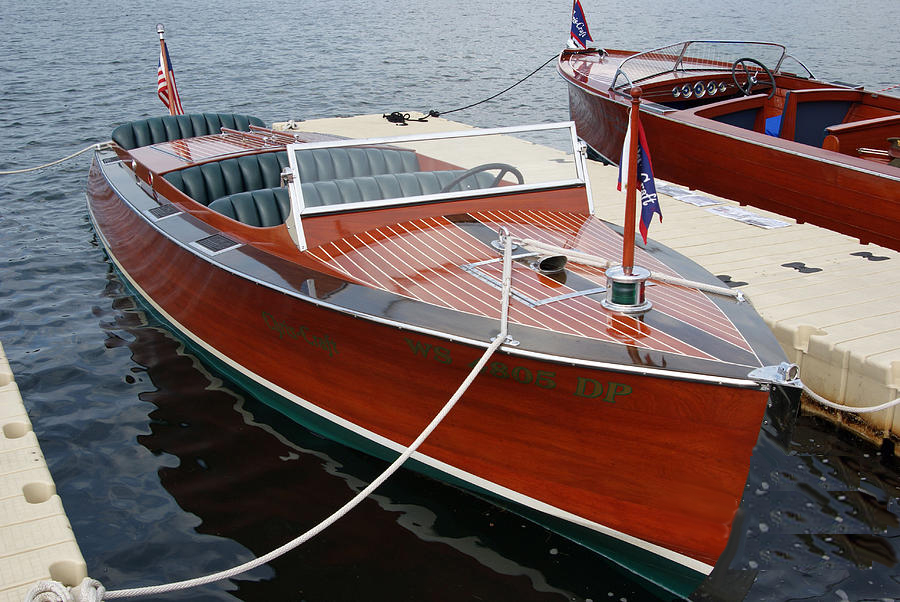Chris Craft founder Chris Smith, when a boy, enjoyed duck hunting, and as a hobby, carved his decoys from wood, which got him interested in boat building. He built his first boat with his brother Henry in 1874, a 13-foot skiff. Both brothers started to build canoes and duckboats. The boats didn’t have motors, but could be rowed or pushed along the seabed with a pole. They both started a small business selling fresh ducks to restaurants and markets in Detroit. The Smith brothers expanded their operations, opening a boathouse in Algonac, Michigan serving clientele. Henry, however, left the boat-building business for duck hunting, growing a business in that sport.The company’s name changed to CC Smith Builder.
The Smith company grew, making canoes, skiffs, and runabouts, powered by gas engines. He also was interested in racing, building his boats to go faster. He had a talent for hull design. He first made a model of the hull before building the actual boat. His first order for a race boat began in 1905, named “Dart” for a businessman, Neil McMillan. The boat reached speeds of 25mph. Smith improved his boats by refining the design, working to improve the propellers and shifting weight to increase speed. Eventually, he started building his own motors.
He received an order for a race boat from a Cincinnati businessman John Ryan. He wanted to beat McMillan’s “Dart” in races across the Saint Clair River. Smith and Ryan built the “Reliance 1 and 2” The speeds were record-breaking in the early 1900s.

In 1910, Smith and Ryan went into business to form the Smith-Ryan Boat Company. Ryan’s capital allowed them to continue developing their race boats then began building boats for the general public. Ryan kept developing his racing program. However, his spending habits left him almost bankrupt. The debts to the Smith-Ryan Company couldn’t be paid, so the two men separated their partnership.
An industrialist Garfield “Gar” Wood came aboard the the “Miss Detroit” syndicate, which was a race boat built by Smith-Wood. He became interested in the sport and purchased Smith’s company. Smith’s sons stayed on the scene to manage the business.
By the 1920s the sons Jay and Bernard told their father it was time to break away from Wood and go back to running a family business. The Smith family bought 20 acres of land in Algonac, forming the Chris-Smith and Sons Boat Company. They began building boats for a larger audience at a reasonable price. They also received a contract from Wood to build 33-foot Baby Gar hulls.
In 1925, the Smiths continued to build their runabouts. At this time, they produced 111 units. Jay Smith came up with a name for a special model, a “Chris-Craft”, to honor his father. Then on, all boats were known as a Chris-Craft. The new boats became popular and demand for them was high.
In 1926, Chris-Smith and Sons began a small dealership network for marketing and selling boats, instead of selling from the factory to the consumer. They were building about 1,000 boats per year. It generated more than $3 million in sales. By 1929, the company made a profit of $300,000. Smith turned to Walter Chrysler of the Chrysler Corporation to provide motors for some of Smith’s boats. A Chrysler Imperial marine engine was made for Chris-Craft boats.
In the 1930s, Chris-Craft started to offer stripped-down versions of its’ runabouts. It was called, “utility” for its’ less-expensive models. In 1936, the company offered cruisers with overnight accommodation. Chris-Smith who created the birth of Chris-Craft passed away on September 9, 1939 at the age of 78.
Ref: Power and Motoryacht, by NickVoulgaris 111
An American Classic: Humble Beginnings of Chris Craft
